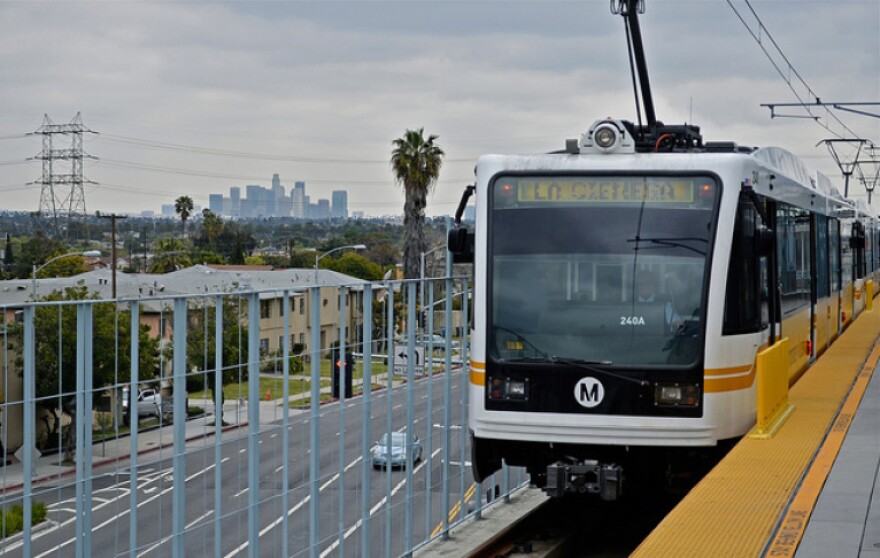Truth matters. Community matters. Your support makes both possible. LAist is one of the few places where news remains independent and free from political and corporate influence. Stand up for truth and for LAist. Make your tax-deductible donation now.
Denser housing may be on the horizon near LA's transit centers

A new bill seeks to address lagging transit ridership and the state's housing shortage in one fell swoop.
SB79 would upzone thousands of parcels throughout California, allowing for more dense housing near major transit centers.
“It's hard to think of a better place to build multi-unit apartment buildings, townhomes and condos, than around the highest quality public transportation,” said California Sen. Scott Wiener, who introduced the bill.
Los Angeles has made major strides in expanding its rail network, he said, but ridership numbers are lagging.
“Public transportation reduces traffic ingestion, and it's a good climate strategy,” he added. “The best way to increase public transportation ridership is to have more people living near it so that they can walk to it.”
Wiener’s office says the goal is “Paris-like density.” Lots would have their zoning restrictions updated automatically based on their proximity to transit stations and the amount of daily trains that pass through.
In many cases, lots zoned for single family housing will increase to 4, 5, 6 or 7 stories.
Lots within a quarter mile of B and D line subway stops, including the stops under construction for the D-line expansion project, would see the tallest new height restrictions at seven stories.
“ We invest billions to build rail stations, subway stations, rapid bus service," Wiener said. "And then we make it impossible to build densely around these transit stops."
One solution, for a multi-pronged problem?
More than 40% of Los Angeles is zoned for single-family use — and that's been the case for decades.
"These neighborhoods were built 40 years ago, 50 years ago, 80 years ago, when Southern California was a very different place," said Genevieve Giuliano, professor of public policy at USC. "It may have made perfect sense to have single-family housing in those areas, but the region has changed tremendously."
SB79 is being billed as an elegant solution to a multi-pronged problem — increased housing stock, increased transit access and ridership — but it is not without its critics. Some cities have argued that it would reduce their autonomy over local housing regulations, and others say the bill lacks a guarantee of increased affordable housing.
Some residents have also expressed opposition to denser zoning because of the impact they fear it could have on property values.
"I think it just goes back to people who are living in those neighborhoods who want to preserve them," Giuliano said. "They may see change as something that's going to lower their quality of life."
As for affordability, Giuliano said rental prices won't drop unless housing stock is increased.
In Los Angeles, the Inclusionary Housing Ordinance requires developers to set aside a percentage of new units for affordable housing. But that doesn't apply to single-family homes.
Incentivizing density
One of the biggest hurdles for any new housing bill is incentivizing people, Giuliano said.
" We have a really serious housing crisis in California," she said. "We also have air pollution problems. We have congestion problems. Imagine a city without that, where everything you need is close by... you would live in a much more interesting environment."
Corrected May 19, 2025 at 5:19 PM PDT
A previous version of the story included an unofficial map of the upzoned lots under SB79.







